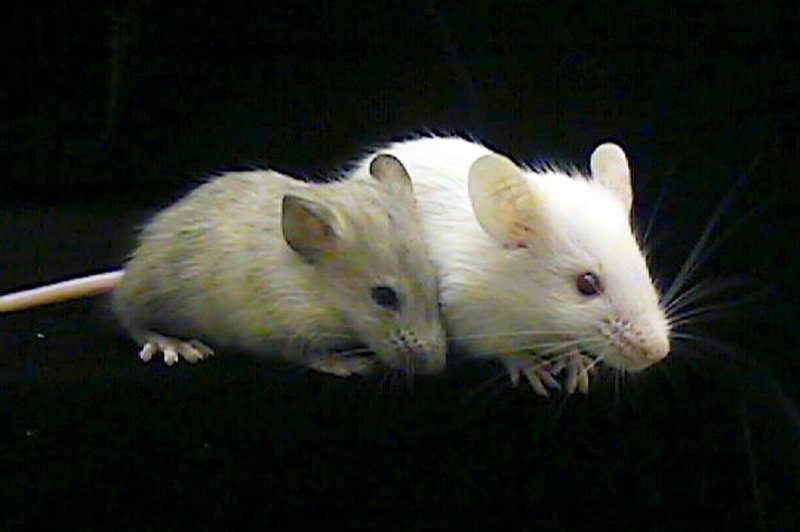Despite receiving human brain implants, the lab mice didn't become more intelligent or behave differently. Photo by rw/HO/Carolyn Cronin/UPI |
License Photo
April 16 (UPI) -- Miniature human brains, or human brain organoids, can survive and grow after being implanted in the skulls of mice. It's the first time human cerebral organoids have been installed inside another species.
Researchers describe the breakthrough in a new paper published Monday in the journal Nature Biotechnology.
Scientists grew the pea-sized brains from stem cells and then placed them inside the skulls of mice. Researchers removed a small amount of tissue to make room for the miniature brains. Tiny, transparent windows in the skulls of the test mice allowed scientists to keep tabs on the brain implants -- the organoids were also designed to express a green fluorescent protein, causing them to glow inside the mice skulls.
Roughly 80 percent of the implants were successfully received and, within two weeks, all of the successful implants spawned new neurons. The brain implants survived for an average of 233 days. The mice and human brains even forged cross-species axons, or brain wiring, sending signals back and forth across synapses bridging mouse and human neurons.
"That was a big accomplishment," Abed AlFattah Mansour, a research associate at the Salk Institute, said in a news release. "We saw infiltration of blood vessels into the organoid and supplying it with blood, which was exciting because it's perhaps the ticket for organoids' long-term survival."
While observations suggest the brains grew and developed inside the mice models, the test subjects appeared unchanged and unaffected by the procedure. The mice didn't become smarter or alter their behavior.
Researchers have been growing human organoids from stem cells for some time. Scientists have successfully grown differentiated neural cells and brain structures, too. As the organoids develop in culture disks, however, they eventually become too large to survive.
"In our hands, the organoids stop growing around five weeks," lead researcher Fred Gage, a neuroscientist at the Salk Institute, told STAT. "It's a function of size rather than time. We see some cell death even in the edge of the organoids starting at 10 weeks, which becomes really dramatic over time. This is an obvious hurdle for longtime study."
According to Mansour, the research team accomplished three main feats: installing the organoid in a tissue environment, connecting it with an organism and perfusing it with a vasculature system.
"These three elements are important for both basic research and drug discovery of brain disorders; for example, our approach has the potential for pre-clinical drug testing of patient-specific derived brain organoids under the organism setup," Mansour told UPI. "In addition, long-term survival could help the organoid to develop beyond the present embryonic stages that we see in culture."
While organoids grown from stem cells could one day be used in organ repair and replacement therapies, researchers say the next step is disease modeling.
"We hope this technology will set the stage and help to understand the pathogenesis of neurodevelopmental, neuropsychiatric and neurodegenerative disorders by enabling the generation of brain organoids from patients' own stem cells, transplanted into rodents," Mansour said.















